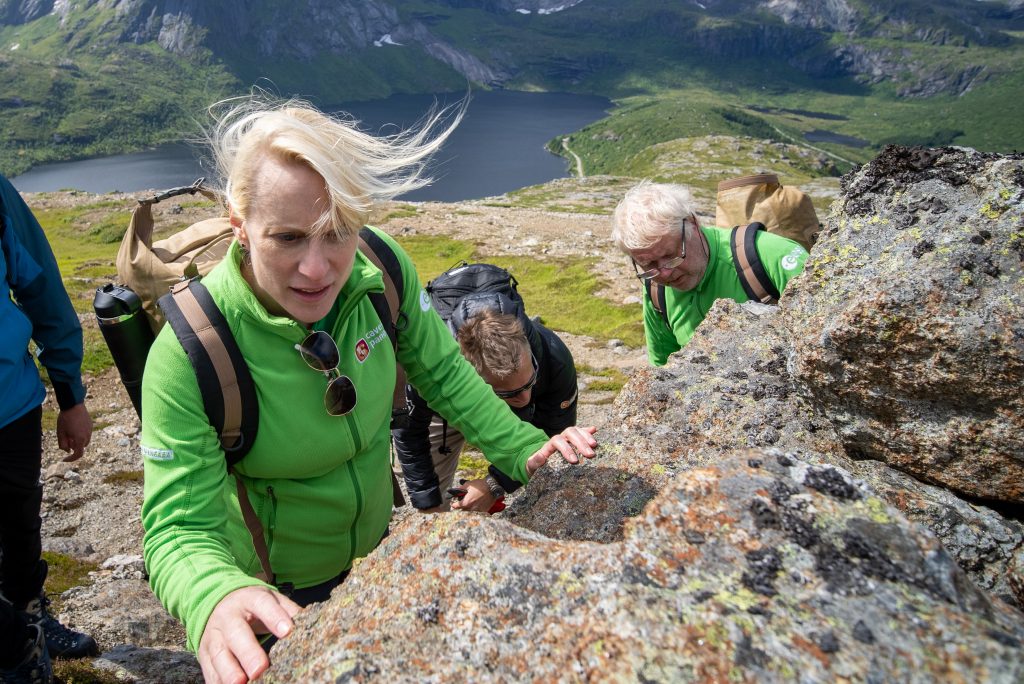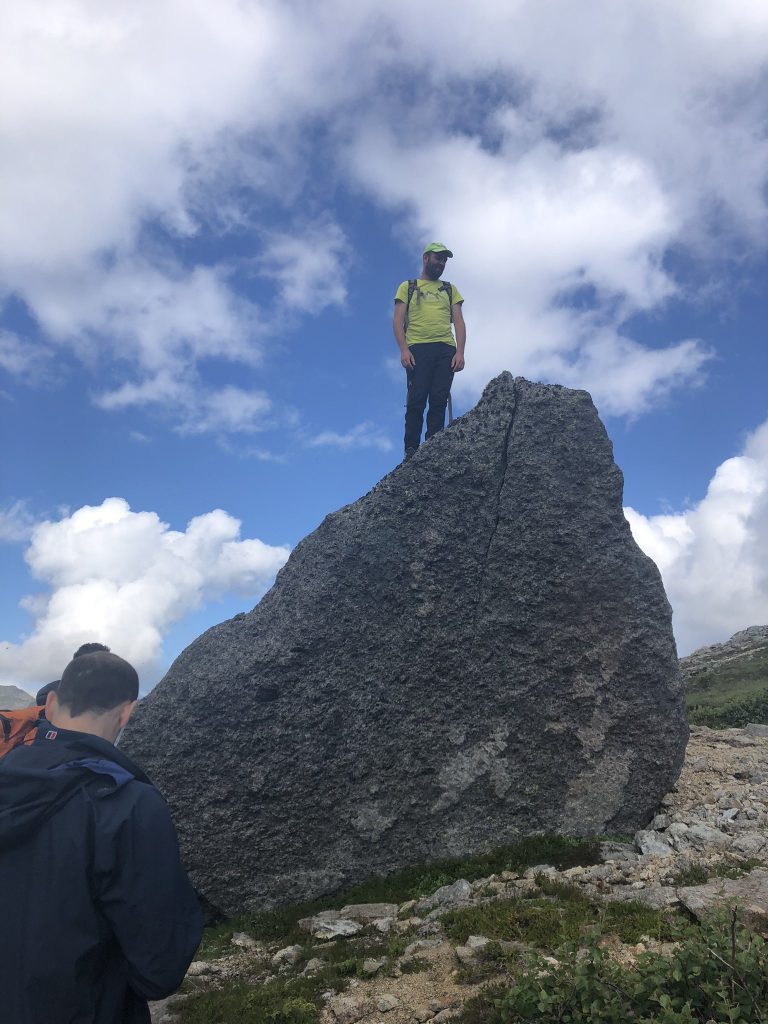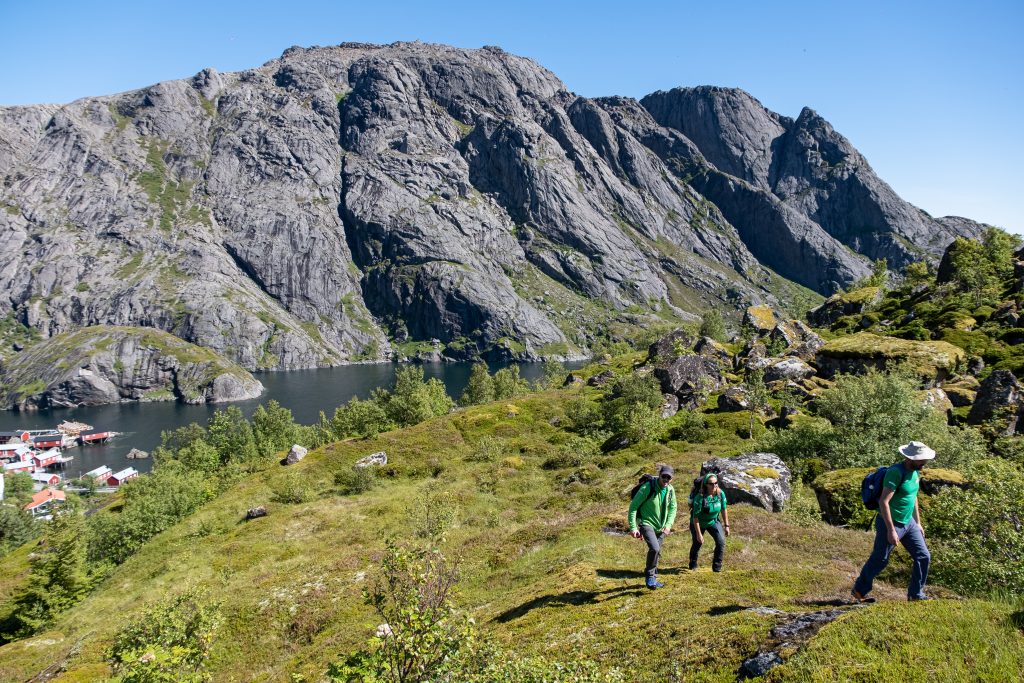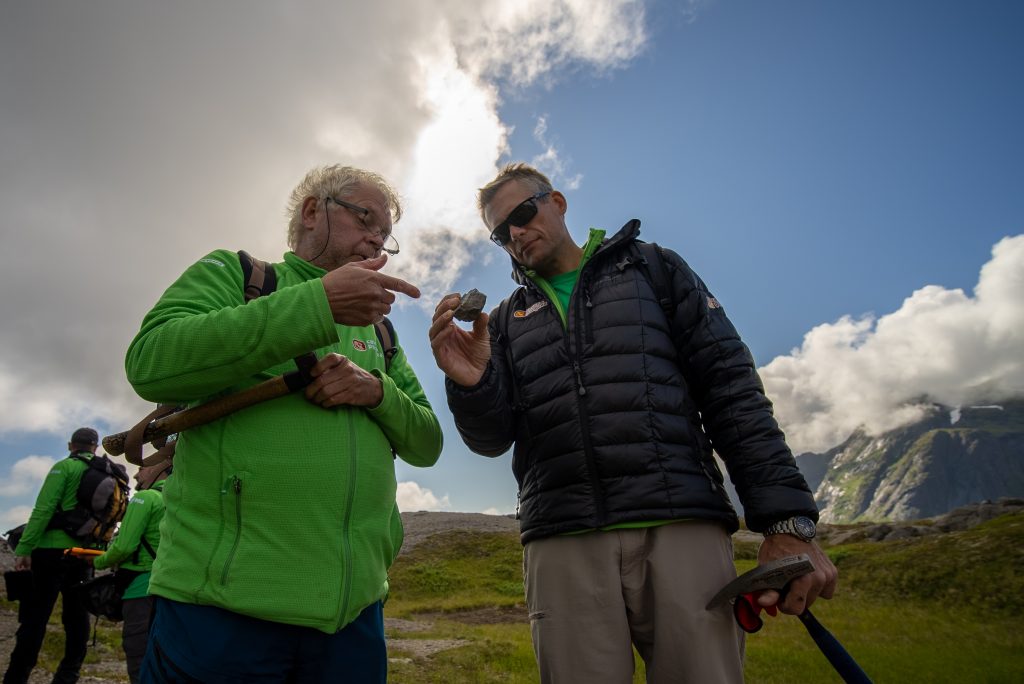Today, a team of astronauts and planetary scientists are exploring a large mountain of crystalised magma in Lofoten, a remote Arctic location in Norway, as part of the Pangaea geology training course.
Once a glacier, the gigantic Vestfjorden ice tongue lost billions of tons of water, which eroded its surroundings and brought to the surface a rock we call anorthosite. Anorthosites are hard to find on ur planet because they tend to lie deep down in the Earth’s crust. On the Moon, however, they are spread everywhere – especially in the lunar highlands.

For rock addict Francesco Sauro, director of the Pangaea course, the main draw of anorthosites is their resemblance with the primordial lunar crust. “In the beginning the Moon was like a ball of fire with a melted surface. In this ocean of magma crystals slowly cooled down during roughly the first 100 million years of lunar history,” explains Francesco.
The lunar ocean solidified to form the crust of the Moon, and as it did, anorthosites crystallised. In this crust, a Moonwalker could easily find them by digging into the bright, heavily cratered highlands.
“To see something like that on Earth, we had to come to the mountains above the small fishing village of Nusfjord, in Lofoten. With the naked eye you can read the story of two different materials: the 1.8-billion-year-old magma, and the lost glaciers of the latest glacial age, right in the landscape around you,” says Francesco.

The Nusfjord mountain is itself like “a huge magma chamber, and an analogue of the molten ocean of the Moon,” he adds.
Moonlight shine bright
Francesco tells that when the light sets on these hills and valleys, the surface shines. “These rocks are shiny because they are made of crystals. Walking here in Lofoten, you really understand why the highlands of the Moon are so bright,” he says.

Even if it is a chilly summer with average temperatures of 12 degrees, this Arctic location guarantees 24 hours of light to aid exploration.
Francesco expects astronauts Andreas Mogensen and Kate Rubins to recognise the lunar-like rocks with the naked eye, even at a distance. “They should be able to spot the beautiful crystals of the anorthosites, and more iron rich olivines,” he says.
Andreas and Kate will analyse spectral images from satellites before starting each expedition, and from there build the lunar-like geological story of the place. The astronauts will follow the traces of the molten magma to understand how it crystallized in different minerals, like a huge melting pot.

“The role of humans in space exploration can make a difference to refine the hypothesis about the origin of the Moon,” says Cesco. “We need to go there and see it with our own eyes.”
Vanishing glaciers
Pangaea astronauts are trained to analyse the processes that have changed the landscape in the past. The ancient glaciers of Lofoten left the rocks exposed on the surface of the mountains only a few thousand years ago, but it remains hard to imagine these beautiful islands covered by gigantic tongues of ice.
As ESA astronaut Luca Parmitano put it during his expedition to the Gorner glacier, “when we look at glaciers now, we already see the past, not the present. What we see will not be here in a few years from now because it is already in the process of disappearing.”
As explorers, understanding the history of glacial erosion in Lofoten will help Andreas and Kate consider what might have happened also on planets like Mars through dramatic climate changes. “The astronauts’ feedback is very important for scientists to understand what could happen to the Earth in the future.”

Discussion: no comments